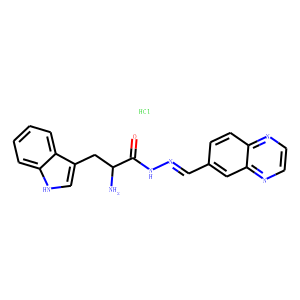| Reference | 1. J Leukoc Biol. 2017 Jul;102(1):71-81. doi: 10.1189/jlb.2A0616-279RRR. Epub 2017
Apr 14.
<br><br>
The effect of Rho drugs on mast cell activation and degranulation.
<br><br>
Sheshachalam A(1), Baier A(1), Eitzen G(2).
<br>
Author information: <br>
(1)Department of Cell Biology, University of Alberta, Edmonton, Alberta, Canada.
(2)Department of Cell Biology, University of Alberta, Edmonton, Alberta, Canada
[email protected].
<br><br>
Mast cells are tissue-resident immune cells that produce potent proinflammatory
mediators, which are stored in cytoplasmic granules. Stimulation triggers
degranulation, a process that mobilizes granules to dock and fuse to the plasma
membrane, releasing mediators. Mast cell degranulation has an important role in
immunity but can also intensify inflammation and contribute to allergic
disorders. Hence, it is important to understand signaling pathways that regulate
mast cell degranulation. Here, we examined the role of Rho proteins in regulating
mast cell activation leading to degranulation. RBL-2H3 cells and bone
marrow-derived mast cells (BMMCs) were stimulated through aggregation of FcεRI
receptors. Stimulated cells showed a large increase in the levels of activated
Rac and, to a lesser extent, RhoA. Drugs were used to acutely inhibit the
function of specific Rho proteins. The Rac inhibitor EHT-1864 and the RhoA
inhibitor rhosin inhibited degranulation. Microscopic characterization showed
that, upon stimulation, RBL-2H3 cells formed surface ridges that grew into large
protrusions reminiscent of circular dorsal ruffles, which flattened into large
lamellipodia. LysoTracker-labeled cells showed granules stream into peripheral
protrusions. EHT-1864 reduced granule motility, whereas rhosin increased
motility; both drugs affected the formation of peripheral protrusions. These
results showed that, in response to stimuli, Rho proteins control discrete
cytoskeletal remodeling processes that are needed for granule exocytosis. Rac is
required to stimulate the remodeling of mast cells, triggering actin-mediated
flattening of the cell periphery to create an active degranulation zone, whereas
RhoA controls the streaming of highly motile granules into the active zone.
<br><br>
2. Chem Biol. 2012 Jun 22;19(6):699-710. doi: 10.1016/j.chembiol.2012.05.009.
<br><br>
Rational design of small molecule inhibitors targeting RhoA subfamily Rho
GTPases.
<br><br>
Shang X(1), Marchioni F, Sipes N, Evelyn CR, Jerabek-Willemsen M, Duhr S, Seibel
W, Wortman M, Zheng Y.
<br>
Author information: <br>
(1)Division of Experimental Hematology and Cancer Biology, Children/’s Hospital
Research Foundation, 3333 Burnet Avenue, Cincinnati, OH 45229, USA.
<br><br>
Rho GTPases have been implicated in diverse cellular functions and are potential
therapeutic targets. By virtual screening, we have identified a Rho-specific
inhibitor, Rhosin. Rhosin contains two aromatic rings tethered by a linker, and
it binds to the surface area sandwiching Trp58 of RhoA with a submicromolar Kd
and effectively inhibits GEF-catalyzed RhoA activation. In cells, Rhosin
specifically inhibited RhoA activity and RhoA-mediated cellular function without
affecting Cdc42 or Rac1 signaling activities. By suppressing RhoA or RhoC
activity, Rhosin could inhibit mammary sphere formation by breast cancer cells,
suppress invasion of mammary epithelial cells, and induce neurite outgrowth of
PC12 cells in synergy with NGF. Thus, the rational designed RhoA
subfamily-specific small molecule inhibitor is useful for studying the
physiological and pathologic roles of Rho GTPase.
<br>
|

